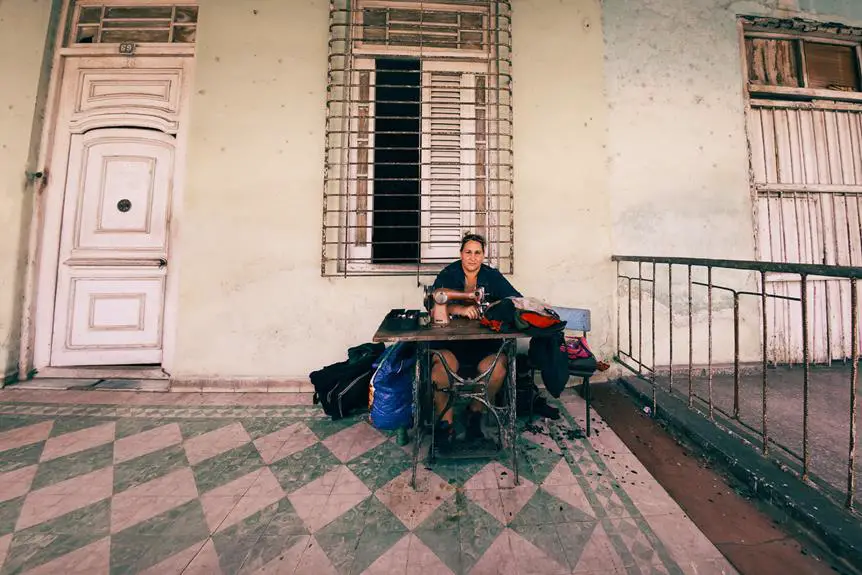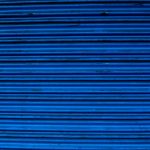Wondering which fabrics truly stand out when it comes to sewing durable and stylish bags? You're not alone in this quest for the perfect materials. Understanding the best fabrics for sewing bags is essential for creating a functional and fashionable end product.
From durability and water resistance to style and eco-friendliness, the choice of fabric can make all the difference in the quality and longevity of your bag.
Let's delve into the world of fabrics and explore the best options for your next sewing project.
Key Takeaways
- Canvas, denim, and twill are durable fabrics that are ideal for sewing bags due to their longevity and shape retention.
- Breathable nylon and recycled polyester are excellent options for waterproof and water-resistant bags, depending on the level of protection required.
- Durable canvas and soft cotton are stylish and versatile fabric choices that allow for personal style expression and complement a wide range of outfits.
- Lightweight and easy-to-clean materials like breathable mesh, nylon, and polyester are suitable for various bag types and ensure durability and practicality.
Durable Fabrics for Longevity
When sewing bags, you should consider using durable fabrics that can withstand daily wear and tear. The longevity and durability of a bag depend heavily on the strength and resilience of the fabric used. Fabrics like canvas, denim, and twill are excellent choices for creating sturdy and long-lasting bags.
Canvas, in particular, is known for its durability and ability to hold its shape, making it ideal for tote bags and backpacks. Denim is another robust fabric that can endure heavy use, perfect for creating durable messenger bags or crossbody bags. Twill is a tightly woven fabric that offers both strength and flexibility, making it a great option for creating long-lasting duffel bags or weekenders.
It's important to consider the intended use of the bag when selecting the fabric. For everyday bags that will be used for work or school, a sturdy canvas or denim fabric will provide the necessary durability to withstand constant use. On the other hand, for travel bags that will endure rough handling, twill can offer the resilience needed to withstand the rigors of travel.
Selecting a fabric with the right combination of longevity and durability is essential for ensuring that your handmade bags will stand the test of time.
Waterproof and Water-Resistant Options
For sewing bags, you should consider using fabrics that are waterproof or water-resistant to protect the contents from moisture and spills. When it comes to waterproof and water-resistant options, breathable nylon and recycled polyester are excellent choices.
Breathable nylon is a popular fabric for bags because it isn't only waterproof, but also allows air to pass through, preventing the buildup of moisture inside the bag. This makes it an ideal option for bags that may be exposed to varying weather conditions.
Recycled polyester is another great choice, as it isn't only water-resistant but also environmentally friendly. It's made from recycled plastic bottles, making it a sustainable option for bag making.
Both breathable nylon and recycled polyester offer durability and protection from the elements, making them suitable for creating long-lasting and functional bags. When selecting fabrics for your bag-making projects, keep in mind the intended use of the bag and the level of protection required against water and moisture.
Stylish and Versatile Fabric Choices
When it comes to sewing bags, you'll want to consider stylish and versatile fabric choices that also offer durability and comfort.
Durable canvas is a great option for its strength and ability to hold its shape, while soft cotton provides a comfortable and lightweight alternative.
These fabric choices not only offer practicality but also allow you to express your personal style through the bags you create.
Durable Canvas for Durability
When sewing bags, you'll find that durable canvas is an excellent choice for ensuring longevity and resilience. Canvas is known for its durability, strength, and ability to hold heavy-duty items while maintaining its structure. It's a popular choice for bags because of its sturdiness and ability to withstand daily wear and tear. The tightly woven fabric provides a strong foundation for bags, making it perfect for creating long-lasting and reliable pieces. Canvas also offers a versatile canvas for creative designs, allowing you to personalize your bags with various colors, patterns, and embellishments. Below is a table showcasing the key features of durable canvas:
| Feature | Description | Benefits |
|---|---|---|
| Durability | Strong and long-lasting | Ensures bag longevity |
| Strength | Resistant to tears and abrasions | Handles heavy items well |
| Versatility | Allows for creative designs | Customizable and stylish |
Canvas is truly an exceptional choice for creating bags that are not only durable but also stylish and versatile.
Soft Cotton for Comfort
Soft cotton is a versatile and comfortable fabric choice for sewing bags. Breathable cotton ensures that your bag won't trap odors or moisture, making it a perfect choice for everyday use.
This fabric is known for its comfortable and cozy materials, which is ideal for creating bags that are pleasant to carry and soft to the touch. Soft cotton also provides a stylish and timeless look, making it a popular choice for creating bags that can complement a wide range of outfits.
Whether you're making a tote, a crossbody, or a backpack, soft cotton offers the flexibility and durability needed for a reliable and fashionable bag.
Lightweight and Easy-to-Clean Materials
For sewing bags, lightweight and easy-to-clean materials are best used to ensure durability and practicality. When considering the best fabrics for sewing bags, it's important to prioritize materials that are not only lightweight but also easy to maintain. Utilizing fabrics that are stain-resistant, quick-drying, and breathable ensures that your bags will withstand the wear and tear of everyday use while remaining easy to care for. Here are some lightweight and easy-to-clean materials that are ideal for sewing bags:
| Material | Properties | Best Use |
|---|---|---|
| Breathable Mesh | Moisture Wicking | Ideal for sports or gym bags |
| Nylon | Stain Resistant, | Great for travel or outdoor adventure bags |
| Quick Drying | ||
| Polyester | Stain Resistant, | Perfect for everyday use bags |
| Quick Drying |
These materials not only provide practicality with their lightweight nature but also offer ease of maintenance, making them perfect for a variety of bag types. Whether you're creating a sports bag, travel bag, or an everyday carry-all, these lightweight and easy-to-clean materials will ensure that your bags are both durable and functional.
Eco-Friendly and Sustainable Fabrics
When choosing fabrics for your bags, it's important to consider eco-friendly options that have a minimal impact on the environment.
Sustainable fabric choices not only benefit the planet but also provide you with materials that are durable and long-lasting.
Eco-Friendly Options Available
Consider using eco-friendly and sustainable fabrics for your bag sewing projects to reduce environmental impact. Recycled polyester is an excellent option, as it lessens the amount of plastic waste in landfills and oceans. When shopping for fabric, look for those made from recycled polyester to contribute to a cleaner planet.
Organic cotton is another eco-friendly choice, as it's grown without harmful pesticides and chemicals, reducing the environmental impact of traditional cotton production. Additionally, consider using biodegradable fabrics such as hemp blends, which break down naturally, minimizing their ecological footprint.
These fabrics not only help reduce waste but also promote sustainable practices within the fashion industry. By incorporating these materials into your bag sewing projects, you can make a positive impact on the environment.
Sustainable Fabric Choices
To make sustainable fabric choices for your bag sewing projects, opt for eco-friendly and sustainable fabrics that minimize environmental impact, such as recycled polyester, organic cotton, and biodegradable hemp blends.
When considering fabric sourcing, look for materials that have been ethically produced and are environmentally sustainable. Recycled polyester, for example, is made from post-consumer plastic bottles, reducing the strain on virgin resources. Organic cotton is grown without synthetic pesticides and fertilizers, promoting healthier soil and water conservation. Biodegradable hemp blends aren't only durable but also decompose naturally, minimizing environmental impact.
Impact on Environment
When sewing bags, you should prioritize eco-friendly and sustainable fabrics to minimize the environmental impact of your projects. Opting for eco-friendly alternatives such as organic cotton, hemp, or recycled polyester can significantly reduce the carbon footprint of your bag-making endeavors. These fabrics are produced using methods that minimize the use of harmful chemicals, pesticides, and water, making them more sustainable choices.
Additionally, they often have a lower environmental impact in production compared to traditional fabrics. For instance, organic cotton is grown without synthetic pesticides and fertilizers, while hemp requires minimal water and no pesticides for cultivation. As for recycled polyester, it helps reduce the amount of plastic waste in landfills.
Heavy-Duty Fabrics for Structure
If you want your bag to have a sturdy and durable structure, choose heavy-duty fabrics such as canvas or denim for your sewing project.
Heavy-duty canvas is an excellent choice due to its robust and rugged nature. It provides exceptional strength and stability, making it ideal for creating bags that can withstand heavy loads and frequent use.
Reinforced polyester is another great option, offering durability and resistance to tearing and stretching, ensuring your bag maintains its shape over time.
If you require water resistance, consider using waterproof nylon, which not only provides structural support but also protects your belongings from moisture.
Additionally, water-resistant vinyl is a sturdy fabric that can add structure to your bag while offering protection from light rain and splashes.
These heavy-duty fabrics are perfect for creating bags that not only look great but also stand the test of time, providing the structural integrity necessary for carrying your essentials with confidence.
Soft and Comfortable Options
Consider using materials such as cotton, linen, or flannel for a soft and comfortable feel in your bag-making projects. These fabrics provide a gentle touch and are perfect for creating bags that are pleasant to carry and use.
When it comes to soft and comfortable options, breathable and moisture-wicking materials are essential for ensuring that your bag remains fresh and free from unpleasant odors. Fabrics like cotton and linen are known for their breathability, allowing air to circulate and preventing the buildup of moisture inside the bag. Additionally, these materials are comfortable against the skin, making them ideal for everyday use.
For a truly luxurious and cozy feel, you may also want to explore plush and plushy fabric options. These materials add a touch of elegance and comfort to your bag, making it a joy to carry. Whether you're creating a stylish tote or a functional backpack, incorporating plush fabrics can elevate the overall look and feel of the bag while providing a soft and cushioned texture.
Unique and Textured Fabrics
Explore unconventional fabric options to add texture and visual interest to your bag creations.
Textured tweed is a fantastic choice for adding depth and dimension to your bags. The unique woven pattern of tweed creates a visually appealing texture that adds a touch of sophistication to your designs. It's a durable fabric that can withstand the rigors of everyday use, making it ideal for creating stylish and robust bags.
Organic denim is another excellent option for adding a rugged and tactile element to your bags. The natural, unrefined texture of organic denim lends a casual and relaxed vibe to your creations. It's also a sturdy and long-lasting fabric, perfect for crafting durable and fashionable bags.
Both textured tweed and organic denim offer a distinctive look and feel that can elevate the overall aesthetic of your bags. By incorporating these unique and textured fabrics into your designs, you can create bags that stand out and make a statement.
Frequently Asked Questions
Can I Use the Same Fabric for Both the Exterior and Interior of the Bag?
You should consider using different fabrics for the interior and exterior of the bag. This allows you to prioritize fabric durability for the exterior and lighter weight and softer fabrics for the interior, enhancing the overall bag construction.
Are There Any Specific Care Instructions for Maintaining the Quality of the Chosen Fabric?
To maintain fabric quality and durability, follow care instructions provided by the manufacturer. When washing, use gentle detergent, cold water, and air dry. Regularly spot clean to prevent stains and extend the fabric's lifespan.
How Can I Ensure the Fabric I Choose Is Strong Enough to Hold the Weight of the Items in the Bag?
To ensure the fabric is strong enough for your bag, test its strength by stretching and pulling. Choose durable fabrics like canvas or denim and select the right weight for your bag's purpose. Proper care also extends fabric life.
Are There Any Fabrics That Are Best for Specific Types of Bags, Such as Tote Bags Versus Backpacks?
When choosing fabrics for tote bags versus backpacks, prioritize durability and fabric strength. For totes, consider sturdy canvas or denim. Backpacks benefit from water-resistant nylon or polyester. These choices ensure your bags withstand daily wear and tear.
What Are Some Alternative Uses for the Recommended Fabrics, Aside From Sewing Bags?
When it comes to alternative uses, the recommended fabrics for sewing bags can be repurposed for creative projects like DIY crafts, home decor, and fashion accessories. Their versatility makes them perfect for various crafting endeavors.
- Abaca vs. Hemp Fibers: A Head-to-Head Comparison for 2024 - June 25, 2025
- The History of Abaca Fiber: The Pride of the Philippines - June 25, 2025
- Abaca Fiber Characteristics: What Makes This Natural Fiber So Unique? - June 25, 2025





